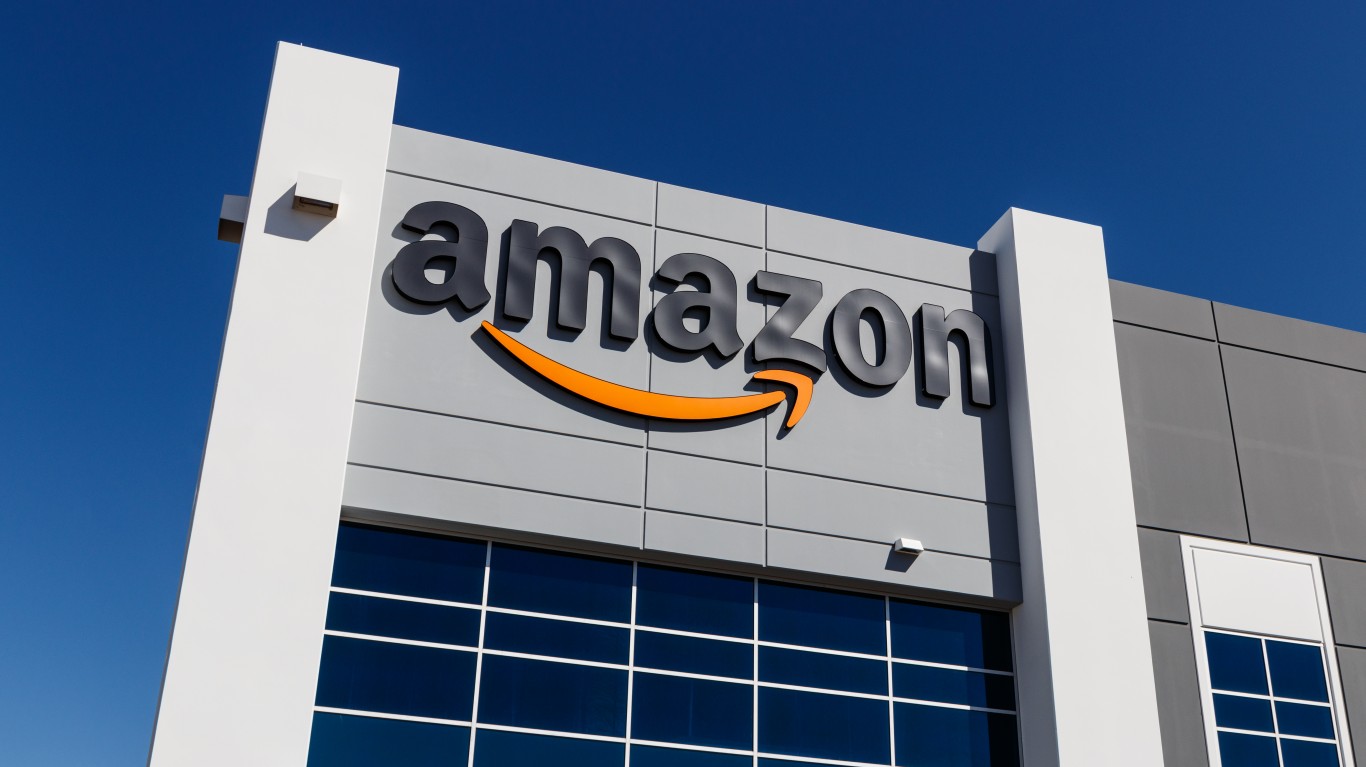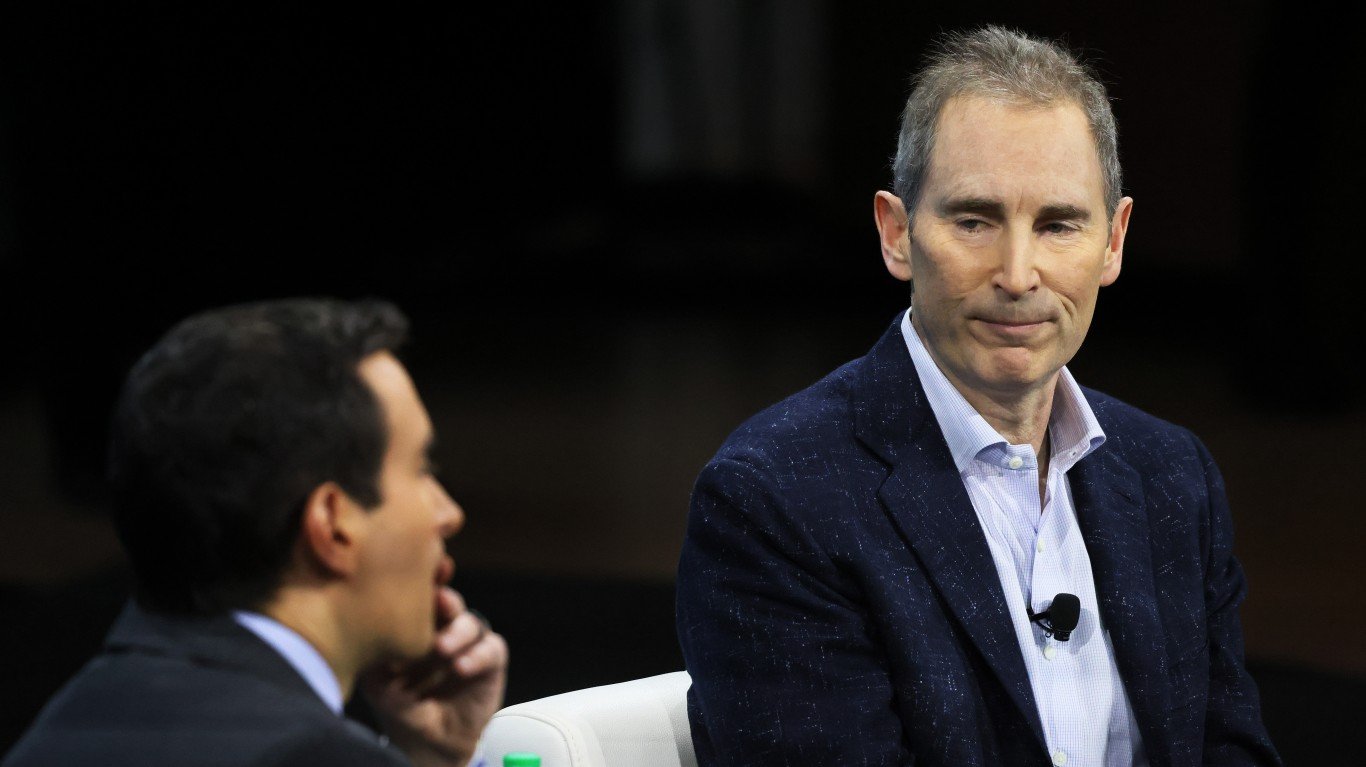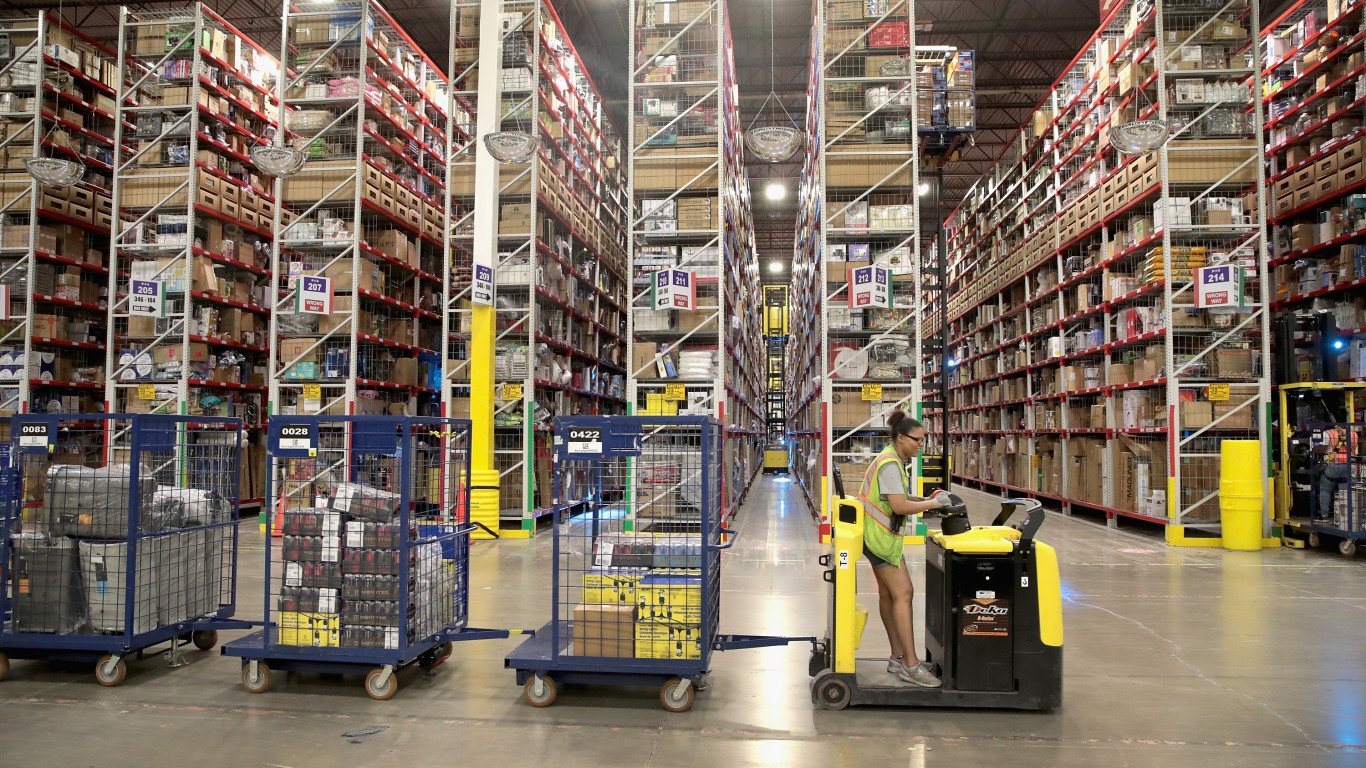

Amazon (Nasdaq: AMZN) has been one of the stock market’s biggest success stories ever. The company IPO’d in May 1997 and traded for an astonishingly low-split adjusted price (just $.07 per share)!
Of course, in late 2023 it trades for more than $100 per share, which is quite the difference. Amazon came into 2013 trading for a split-adjusted $12.80, so its past decade has been phenomenal.
Yet, the only thing that matters from this moment is what does the next decade look like. Let’s crunch the numbers on a 2030 price prediction for Amazon. No one has a crystal ball (don’t trust the “predictions” that are just spreadsheets on other sites!), so we’ll also walk through bull, bear, and our base case scenario for Amazon’s price to tell you how we arrived at each price.
Let’s get started!
Amazon’s Performance Last Decade

Here’s a table summarizing performance in share price, revenues, and profits (net income) from 2014 to 2017.
| Year | 2014 | 2015 | 2016 | 2017 |
| Share Price (Start of Year) | $19.94 | $15.63 | $32.81 | $37.90 |
| Revenues (Billions) | $89.0 | $107.0 | $136.0 | $177.9 |
| Net Income (Billions) | ($.241) | $.596 | $2.371 | $3.03 |
And performance continued from 2018 to 2023.
| 2018 | 2019 | 2020 | 2021 | 2022 | 2023 |
| $58.60 | $73.26 | $93.75 | $163.50 | $167.55 | $85.46 |
| $232.9 | $280.5 | $386.1 | $469.8 | $514.0 | $570.2 (est.) |
| $10.07 | $11.59 | $21.33 | $33.36 | ($2.72) | $27.8 (est.) |
In the last decade Amazon’s revenue grew about 540% while its net income moved from losing money to an estimated $27.8 billion in profits during 2023.
The ride up wasn’t always smooth, however. For example, 2020 saw sales jump 38% and net income nearly double. 2021 saw a continued boom as people moved to e-commerce shopping during Covid.
However, all those sales being “pulled forward” led to challenges in 2022 and the company swinging to a surprise loss. As Amazon embarks into the back half of the decade, a few different key areas will determine its performance.
3 Key Drivers of Amazon’s Stock Performance Through 2030

- E-Commerce Success: While Covid brought record sales to Amazon, it also led to many competitors investing heavily to compete with Amazon online. While e-commerce is still just 15% of retail sales, putting up huge growth rates in online sales won’t be as easy in the coming years as it was a decade ago.
- Amazon Web Services: Amazon Web Services should break $100 billion in total sales in 2024. However, the unit isn’t growing as fast as competing cloud services like Microsoft‘s(Nasdaq: MSFT) Azure and Google (Nasdaq: GOOGL) Cloud. Amazon is at risk of falling behind Microsoft before 2030 if it can’t stop market share losses.
- Advertising: Amazon exits 2023 with an advertising business that’s at a $50 billion run-rate and is still growing at a rapid rate. Advertising has the ability to be another high-margin business line – Amazon currently gets most its profits from its AWS cloud business – that leads the company past $100 billion in annual profits.
Amazon (AMZN) Stock Price Prediction in 2030: Bull, Bear & Base

We estimate Amazon’s stock price in 2030 to be $505 in our bull case, $250 in our base, and $77 in our bear case. Each of these estimates comes from specific scenario analysis into their ecommerce, cloud computing, and advertising businesses.
Bull Case for Amazon’s Share Price
Our bull case for Amazon assumes they top Wall Street projections for the following reasons.
- AWS: AWS will break $100 billion in revenue in 2024. However, its slowing growth (down to 12% revenue growth in Q3 2023) is leading to concerns Amazon will continue losing market share to Microsoft’s Azure. Our bull case assumes Amazon effectively stems share losses and the growth of new AI models propels AWS to an 18% compounded growth rate through 2030. With that assumption, we estimate AWS would generate $86 billion in operating profits in 2030.
- E-Commerce: Amazon continues to pour investments into ecommerce, forgoing added profits to maintain market share. Our bull case model assumes growth in new logistics and efficiencies from robotics in warehouses leads to this unit finally delivering operating profits of about $30 billion annually.
- Advertising: As of late 2023, Amazon’s advertising continued to grow at 26% and was approaching a business with a $50 billion run rate. Our bull case assumes a 15% growth rate through 2030 with 40% operating margins, which results in $50 billion in operating profits by 2030.
Add all these numbers up and take out some amount for “new bets” the company will surely be investing in, and we’re left with about $150 billion in operating profits. Today, the company trades for about 50X operating profit, which we’ll take down to 35 as the company matures (but continues showing strong growth).
In our bull case analysis Amazon is worth $5.25 trillion in 2030, or about $505 per share.
Base Case for Amazon’s Share Price
Our base case for Amazon’s share price is much simpler. In this scenario we simply look at Wall Street forecasts.
| Year | 2024 | 2025 | 2026 | 2027 | 2028 | 2029 | 2030 |
| Revenue (Est. Billions) | $635 | $710 | $791 | $880 | $982 | $1,079 | $1,153 |
| Net Income (Est. Billions) | $36.1 | $48.9 | $63.5 | $78.9 | $97.2 | $114.8 | $110.7 |
Long-term Wall Street forecasts generally overshoot, so let’s assume 2030 net income comes in at $100 billion. This is less than Wall Street forecasts, but still very strong growth.
In this scenario AWS likely sees is growth slow (but still grows at about 10% annually), the company doesn’t see as much profit from e-commerce as our bull scenario, and advertising also slows in the years to come.
Still, $100 billion in profits would be nearly 4X 2023’s estimated level. In this scenario we estimate Amazon’s P/E ratio would fall to about 26, which is about where a larger company like Apple trades today.
This gives Amazon a base case share price of about $250.
Bear Case for Amazon’s Share Price
Finally, we arrive at our bear case scenario. The bear case for Amazon would look something like this:
- The threat from Microsoft Azure (and to a lesser extent Google Cloud) is very real. By mid-decade operating profits stop growing in this Amazon’s cloud division as competitive pressures mount.
- Amazon currently generates negative operating profit outside its Amazon Web Services division, and it struggles to turn the profit nob up in the years to come.
- Advertising flat lines soon as Amazon runs out of places to continue turning advertising up on its site.
- The company continues to burn money on “moonshots” looking for the next leg of growth. Reports came out in late 2022 that the company’s hardware division (Alexa and Echo) were losing $10 billion annually. Amazon certainly knows how to burn cash on ambitious projects.
In this scenario, we’ll still say Amazon grows its net income to $40 billion, which is a healthy increase form 2023. However, frustrated shareholders won’t be willing to the 66X P/E Amazon trades for in late 2023. Instead, we apply a 20X P/E that better reflects Amazon in a low-growth state.
Thus, in our bear case scenario Amazon trades for just $77 per share in 2030.
More Investing News from 247/7 Wall St
- 3 Reasons On Semiconductor is a Conviction Buy Stock
- The 20 Largest Companies in Texas – 5 Fled California
- IBM is America’s Worst Big Tech Company
ALERT: Take This Retirement Quiz Now (Sponsored)
Take the quiz below to get matched with a financial advisor today.
Each advisor has been vetted by SmartAsset and is held to a fiduciary standard to act in your best interests.
Here’s how it works:
1. Answer SmartAsset advisor match quiz
2. Review your pre-screened matches at your leisure. Check out the advisors’ profiles.
3. Speak with advisors at no cost to you. Have an introductory call on the phone or introduction in person and choose whom to work with in the future
Take the retirement quiz right here.
Thank you for reading! Have some feedback for us?
Contact the 24/7 Wall St. editorial team.



